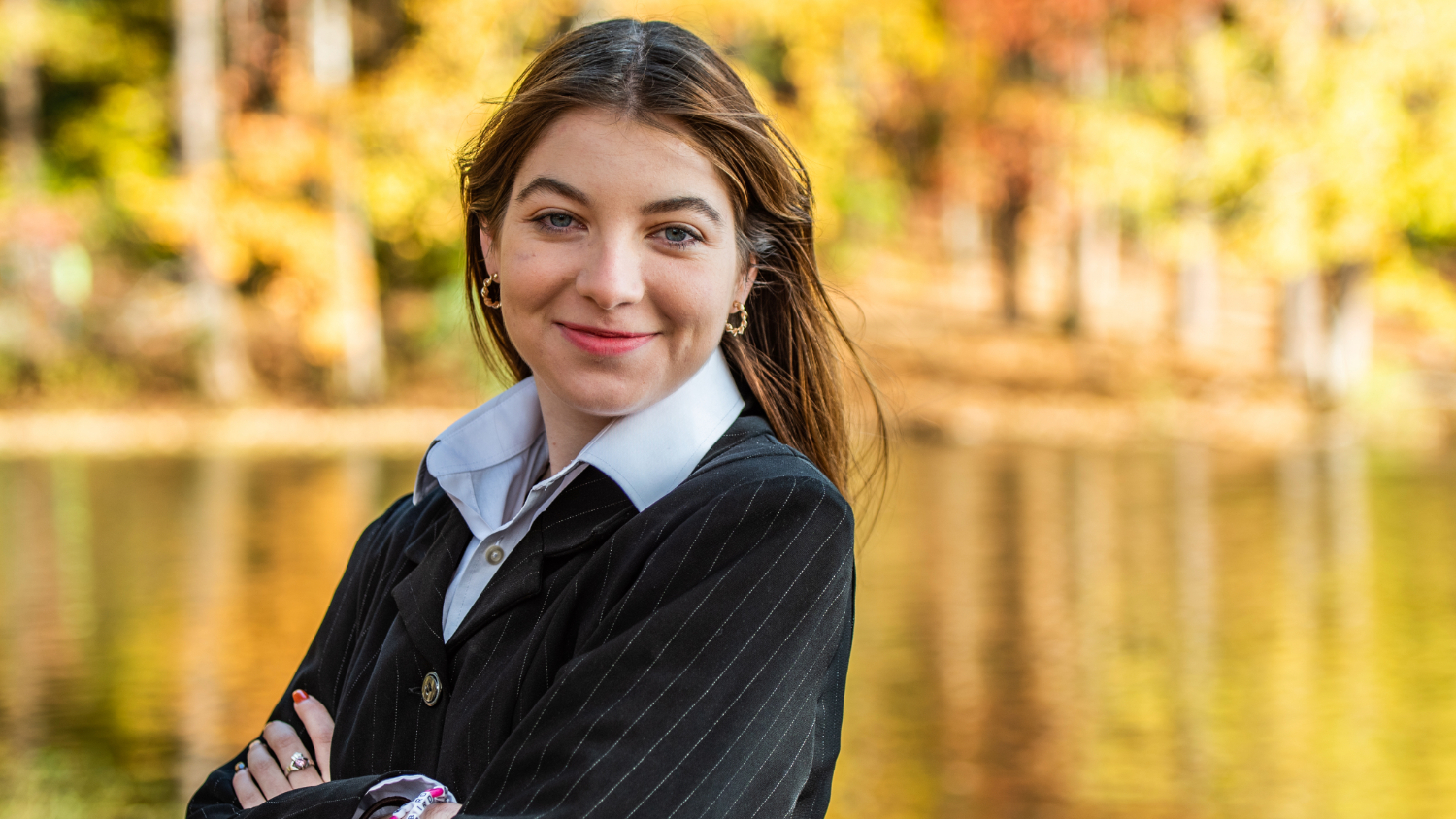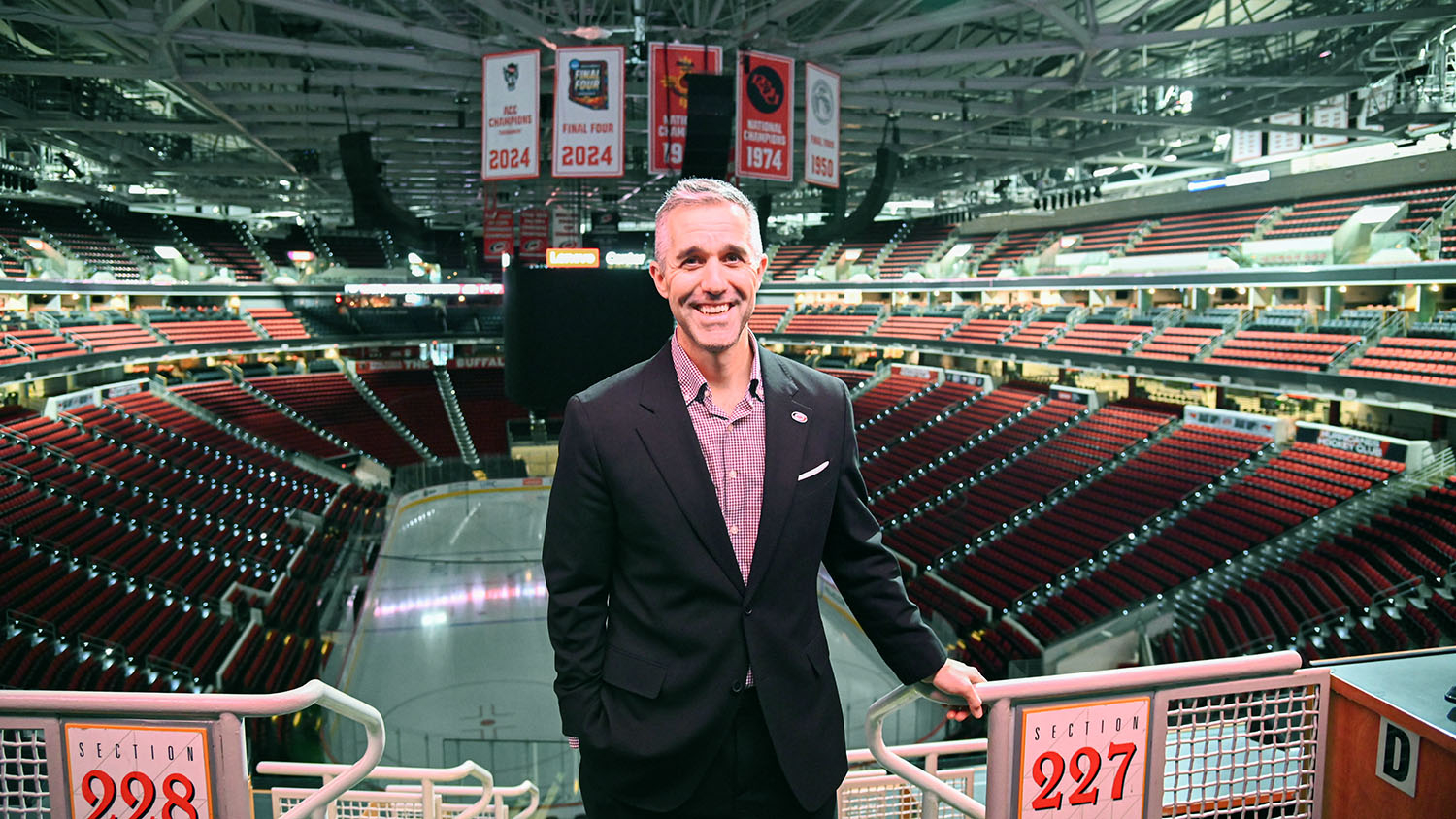The Bonds That Heal: Studying Human-Animal Interactions
The bond between humans and animals can be difficult to describe.
Sure, we know a dog’s tail-wagging kindness can make us happy. A cat’s misbehavior can make us annoyed. In the wild, animals can leave us both mesmerized and afraid.
But it’s more complicated than that.
Two researchers are exploring just how significant our relationships with animals can be. Focusing on a horse-riding academy for at-risk girls, the scholars are documenting how human-animal interaction can serve as a powerful educator of what works and what doesn’t in a healthy relationship. Their preliminary findings not only provide insight into the holistic social benefits of equine-assisted therapies, but show how our connection with horses may be more physiological than you think.
 A Social Connection
A Social Connection
Their research centers on the CORRAL Riding Academy, a Cary, North Carolina, nonprofit that connects at-risk girls with rescued horses. Through riding sessions with trained equine specialists and mental health professionals, in addition to tutoring, vocational training and mentorship, CORRAL’s goal is to give the girls a leg up in life by helping them develop and improve their social and emotional skills.
NC State communication professor Dr. Liz Craig first visited CORRAL in fall 2014 to volunteer as a tutor for the girls. However, after talking with the farm’s founder, Joy Currey, she realized there was an opportunity to study the nonprofit’s unique mission.
Craig, who secured a research sabbatical for the project, had a background in riding horses, but little experience understanding how to study them. All of her past research participants were humans. But she didn’t have to look far for an assist in that area. A happenstance encounter with an NC State animal science student, Leanne Nieforth, provided the perfect pairing for the research.
Nieforth, a Park Scholar who graduated this spring with a bachelor’s degree in animal science and minor in psychology, was volunteering at CORRAL when Craig arrived. She had helped out at the farm since she was a freshman, training as an equine specialist, and had an interest in the human-horse connection from a more physiological perspective.
Many of the girls identify with the horses, and if that connection is there, it’s just like chemistry between two people. And now, these girls have access to a therapy session. It’s a unique opportunity, an alternative to trying to get a 13-year-old girl to sit down in a therapist’s office and talk about all her problems.
— Liz Craig
After teaming up, Craig and Nieforth worked for months to examine the full scope of CORRAL’s operations, from the core horse sessions, to vocational training, to tutoring sessions. The NC State Office of Faculty Development awarded Craig a grant to assist with the project, as part of its Community Engaged Teaching and Research initiative.
With Nieforth helping her interpret the dynamic between the girls, horses and specialists, Craig logged more than 120 hours of data collection at the farm. Compared to identifying psychological outcomes associated with the psychotherapy, Craig focused on communication as a process that facilitates better mental health. Her initial findings suggest that building healthy relationships with the horses through communication helps the girls feel confident in expressing their emotions in appropriate ways while advocating for themselves in challenging situations at home and at school.
“For some of these girls, this is the first time they were seeing what a healthy relationship looks like,” Craig said.
 At the farm, they develop traits like trust, respect and self-empowerment. For instance, Nieforth said if a girl breaks concentration during a CORRAL equine assisted psychotherapy session, her horse may lose interest and wander off along its own path in the arena.
At the farm, they develop traits like trust, respect and self-empowerment. For instance, Nieforth said if a girl breaks concentration during a CORRAL equine assisted psychotherapy session, her horse may lose interest and wander off along its own path in the arena.
“That teaches them something about a healthy relationship,” Nieforth said. “If Liz and I were walking down the hall and Liz suddenly went off by herself, I’d wonder what was going on.”
And the fact that the CORRAL horses are rescued also plays an important role, Craig said.
“Many of the girls identify with the horses, and if that connection is there, it’s just like chemistry between two people,” Craig said. “And now, these girls have access to a therapy session. It’s a unique opportunity, an alternative to trying to get a 13-year-old girl to sit down in a therapist’s office and talk about all her problems.”
Girls who visit CORRAL typically don’t initially vocalize their feelings or talk much at all, Nieforth said. But after working with the horses and using vocal cues and appropriate body language to direct the animal, they gain confidence and are capable of making good life choices.
“We’ve had girls who were being bullied at school who tell us, ‘Today, I stood up and said ‘Please don’t bully me,’” Nieforth said. “That’s huge — that’s a huge step in the right direction.”
It’s Physiological, Too
 Craig and Nieforth’s overall research goal is to not only describe the social effects of human-animal interaction, but also the physiological impacts.
Craig and Nieforth’s overall research goal is to not only describe the social effects of human-animal interaction, but also the physiological impacts.
Previous research has shown that when humans and horses work together, their heart rate variabilities — or the time intervals between heartbeats — align. Nieforth questioned how that alignment may serve as a regulator for the girls at CORRAL, whose past traumas made them more susceptible to deregulation, or low heart rate variability.
Using an advanced heart rate monitor called an emWave2, she measured the girls’ heart rates before, during and after sessions.
“What I’m finding is that before sessions, their variabilities are often deregulated,” Nieforth said. “During sessions, the variability will grow, peak at certain points and become regulated. Afterward, their variabilities are the same and carry over from the session.
“It’s physiological data that illustrates this abstract point of regulation and coherence.”
Nieforth and Craig, who submitted a paper on their work to the National Communication Association’s 102nd Annual Convention, say the interdisciplinary effort opened their eyes to other possibilities for scholarly inquiry. Craig has another project planned with a researcher from the College of Veterinary Medicine to examine a number of communicative and biofeedback indicators between horses and humans. Nieforth plans to attend graduate school to continue to examine the interaction and relationship between animals and humans.
“This has challenged me to think more theoretically about the communication process,” Craig said. “A lot of our standard models are foundational in human-human communication — verbal and nonverbal messages in a continuous loop.
“But I have considered how this human-animal dyad transcends that in a sense. With communication that is micro-nonverbal or has micro-indicators, it’s encouraged me to raise larger questions about how we communicate with animals, and the mutual physical and psychological benefits that can be gained by the bonds humans and animals share with each other.”


